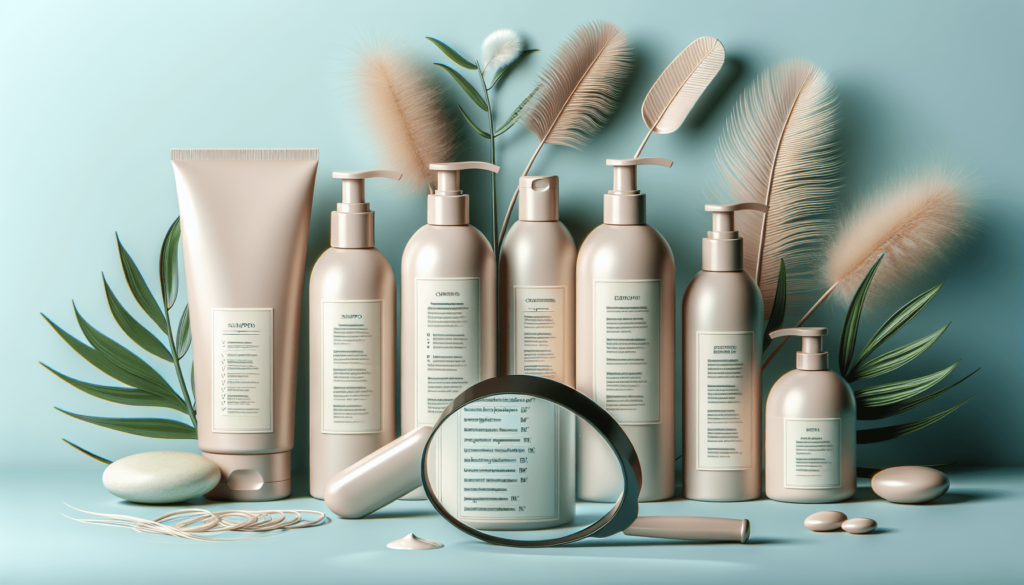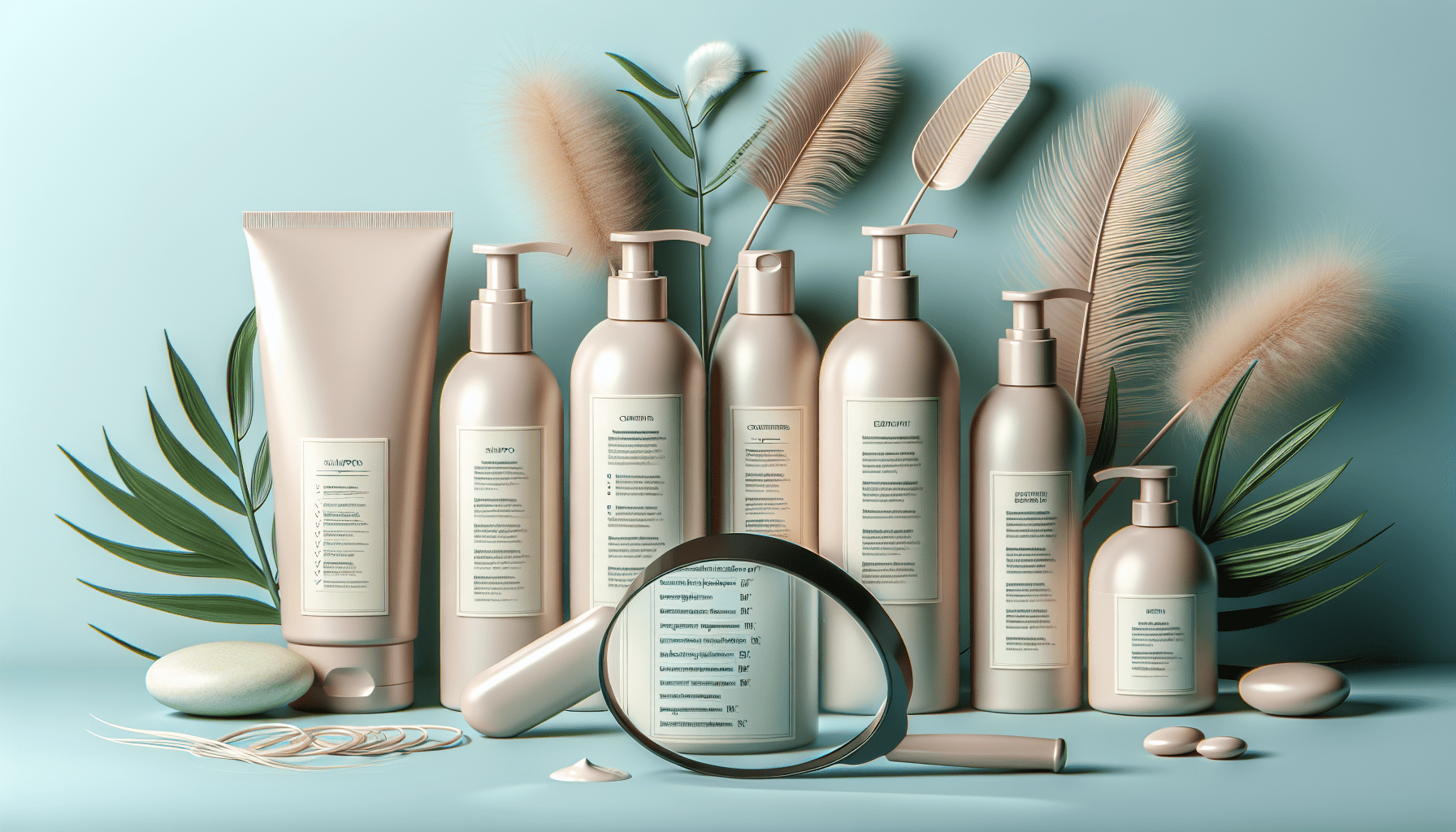In your quest for luscious, healthy hair, it’s crucial to understand the hidden dangers lurking in your favorite hair products. “How To Identify and Avoid Common Allergens in Hair Products” is your go-to guide for navigating the often-confusing world of hair care ingredients. This article will help you recognize the most common allergens, offering practical tips to keep your hair happy and your scalp irritation-free. By making informed choices, you can finally enjoy salon-quality results without the allergies. Have you ever wondered why your scalp feels itchy or irritated after using certain hair products? It’s a pretty common dilemma, and the culprit might be hidden allergens in your shampoo, conditioner, or styling products. But don’t worry, we’re here to help you uncover these sneaky ingredients and offer tips on how to avoid them.
What Are Allergens in Hair Products?
Allergens in hair products are substances that can trigger allergic reactions or sensitivities in some people. These allergic reactions might manifest as itching, redness, flaking, inflammation, or even hair loss. Knowing the common allergens and how to identify them can save you a lot of headaches and discomfort.
Common Symptoms of Hair Product Allergies
To effectively avoid allergens, you first need to recognize the symptoms. Here are some common signs that you might be experiencing an allergic reaction to hair products:
- Itchy or irritated scalp
- Redness or inflammation
- Dryness or flakiness
- Hives or rashes
- Hair falling out more than usual
If you notice any of these symptoms after using a hair product, it’s worth taking a closer look at the ingredients list.
Common Allergens in Hair Products
Identifying the frequent culprits in your hair care regimen is the key to avoiding them. Here are some of the most common allergens found in hair products:
SLS and SLES
Sodium Lauryl Sulfate (SLS) and Sodium Laureth Sulfate (SLES) are common detergents and foaming agents used in shampoos and conditioners. While they help create a luxurious lather, they can also strip natural oils from your scalp, leading to irritation and dryness.
Parabens
Parabens are commonly used as preservatives in hair products. They prevent the growth of bacteria and mold but can also penetrate the skin and potentially disrupt hormone function, leading to allergic reactions.
Formaldehyde and Formaldehyde Releasers
Formaldehyde is another preservative found in many hair products, often listed under different names like DMDM hydantoin, imidazolidinyl urea, and quaternium-15. These agents release formaldehyde over time, which can be particularly irritating to the skin and scalp.
Fragrances
Artificial fragrances are frequently added to enhance the scent of hair products. However, they can include a mix of numerous chemicals, some of which are known allergens. Unfortunately, ‘fragrance’ or ‘parfum’ on an ingredient list gives no clue about what specific allergens might be lurking inside.
Alcohol
Certain types of alcohol in hair products, like isopropyl alcohol and ethanol, can be harsh and drying, leading to scalp irritation. Look out for these sneaky ingredients if you’re prone to sensitivities.
Essential Oils
While some people find essential oils soothing, they can trigger allergic reactions in others, especially if used in high concentrations. Common essential oils that can cause allergic reactions include lavender, peppermint, and tea tree oil.
Silicone
Silicones like dimethicone can build up on the scalp over time, leading to clogged follicles and resultant irritation. While not an allergen in itself, it can exacerbate other inflammatory conditions.
Natural Extracts
Natural isn’t always better. Ingredients like aloe vera, chamomile, or other botanical extracts can cause allergic reactions in some people.

How To Identify Allergens in Hair Products
Navigating ingredient lists can be daunting, but with a little knowledge, you can safely identify and avoid allergens in hair products. Here’s how:
Read Ingredient Labels
The most effective way to avoid allergens is to scrutinize the ingredient list. Here’s a quick reference to help you spot common allergens:
| Allergen Type | Common Names on Labels |
|---|---|
| Sulfates | Sodium Lauryl Sulfate, Sodium Laureth Sulfate |
| Parabens | Methylparaben, Ethylparaben, Propylparaben, Butylparaben |
| Formaldehyde Releasers | DMDM Hydantoin, Imidazolidinyl Urea, Quaternium-15 |
| Fragrances | Fragrance, Parfum |
| Alcohol | Isopropyl Alcohol, Ethanol, Propanol |
| Essential Oils | Lavandula (Lavender) Oil, Mentha Piperita (Peppermint) Oil |
| Silicone | Dimethicone, Cyclopentasiloxane |
| Natural Extracts | Aloe Barbadensis Leaf Juice, Chamomilla Recutita Extract |
Conduct Patch Tests
A patch test can help you determine if a product might cause a reaction before applying it all over your scalp. Apply a small amount of the product to a patch of skin, like your wrist or behind your ear, and observe for 24-48 hours. If you notice any redness, itching, or swelling, it’s best to avoid that product.
Consult Dermatologists or Allergists
If you have a history of allergies or particularly sensitive skin, consulting a dermatologist or allergist can provide personalized advice. They might perform tests to pinpoint which allergens trigger your reactions, making it easier for you to avoid them.
Alternatives to Common Allergens
Knowing what to avoid is one thing, but finding alternatives that work for you is just as crucial. Here are some suggestions:
Sulfate-Free Products
Opt for sulfate-free shampoos and conditioners. These products use gentler surfactants like sodium cocoyl isethionate or decyl glucoside, which clean your hair without stripping away natural oils.
Paraben-Free Options
Look for products labeled as paraben-free. Many natural and organic hair care lines use natural preservatives like grapefruit seed extract or vitamin E instead of parabens.
Natural Preservatives
Formaldehyde-free preservatives like phenoxyethanol and ethylhexylglycerin are good alternatives. These are considered safer and less irritating.
Unscented Products
If fragrances cause irritation, consider switching to unscented or fragrance-free hair products. Many brands offer these versions specifically for sensitive skin.
Non-Alcohol Alternatives
Look for products that use fatty alcohols like cetyl alcohol or stearyl alcohol instead of isopropyl or ethyl alcohol. These fatty alcohols are derived from plants and are much gentler on the skin.
Essential Oil Alternatives
If you’re sensitive to essential oils, choose products that use soothing ingredients like coconut oil, shea butter, or jojoba oil instead. These alternatives are generally less irritating and provide excellent moisture and nourishment.
Silicone-Free Products
Select silicone-free shampoos and conditioners. Ingredients like argan oil, keratin, or wheat proteins can give similar smoothness and shine without the buildup.

DIY Hair Care Solutions
One of the safest ways to avoid allergens is to make your own hair products at home. This way, you have complete control over the ingredients. Here are some simple DIY recipes:
DIY Shampoo
Ingredients:
- 1 cup distilled water
- 1/4 cup liquid castile soap
- 1 teaspoon jojoba oil
- 10 drops tea tree essential oil (optional)
Instructions:
- Mix all ingredients in a bottle.
- Shake well before each use.
- Use as you would any shampoo, ensuring to rinse thoroughly.
DIY Conditioner
Ingredients:
- 1 cup coconut milk
- 1 tablespoon honey
- 1 tablespoon coconut oil
- 1 teaspoon apple cider vinegar
Instructions:
- Blend all ingredients in a bowl.
- Apply to hair after shampooing.
- Leave for 5 minutes and rinse thoroughly.
DIY Hair Mask
Ingredients:
- 1 ripe avocado
- 1/4 cup coconut oil
- 2 tablespoons honey
Instructions:
- Blend all ingredients until smooth.
- Apply generously to your hair and scalp.
- Leave for 20-30 minutes and rinse thoroughly.
Tips For Managing Allergies and Sensitivities
Avoiding common allergens is a big step, but managing existing sensitivities is equally important. Here are some tips to help:
Maintain a Healthy Scalp
Regularly cleanse and moisturize your scalp to keep it healthy. A healthy scalp is less likely to become irritated, even when exposed to mild allergens. Use products suited to your scalp type and avoid over-washing your hair.
Keep a Hair Diary
Document your hair products and any reactions you experience. Over time, patterns may emerge that help you identify specific allergens.
Rotational Use of Products
Use multiple products in rotation to prevent over-exposure to any one set of ingredients. This can reduce the risk of developing sensitivities.
Stress Management
Stress can exacerbate skin conditions and sensitivities. Practice stress management techniques like meditation, exercise, and adequate sleep to help keep your scalp healthy.
Stay Hydrated and Eat Well
Proper hydration and a balanced diet play a critical role in maintaining healthy skin and hair. Drink plenty of water and eat foods rich in vitamins and minerals.
Conclusion
Navigating the maze of hair product ingredients can seem overwhelming, but with a little knowledge and vigilance, you can avoid common allergens and maintain a healthy scalp. Remember to read labels meticulously, consider patch tests, and opt for alternatives that suit your needs. DIY hair care solutions can also provide a safe haven from allergens. By following these tips, you can enjoy healthier, happier hair without any of the itchiness or irritation. Here’s to a more comfortable and enjoyable hair care experience for you!
Now, go ahead and give your hair the gentle, allergen-free care it deserves!
